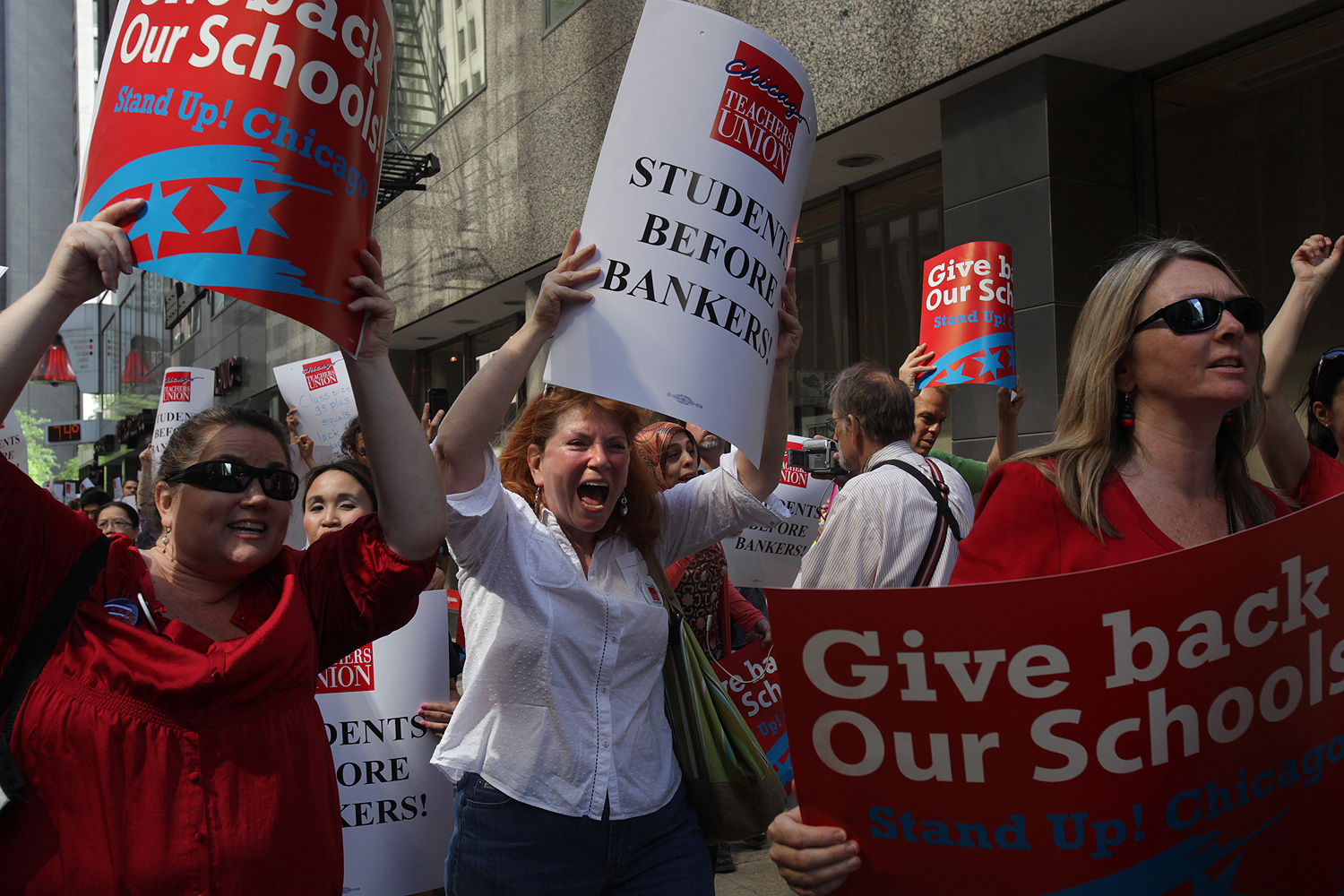Last week David Orr, the Cook County Clerk who's long been a constructive critic of how the city deals with its tax-increment finance districts, made a couple new suggestions for additional reforms of the TIF program. One's new, the other's been around for awhile: take 10 percent of buildings within TIF districts out of the TIF program, and chain TIF districts to inflation. He estimates it'll return about $44 million out of the TIF coffers and back to the usual taxing bodies, like schools and parks and whatnot.
Here's how the first plan would work. When a TIF district is created, the amount of property taxes going to taxing bodies is set and remains in place for the duration of the district. Everything beyond that—the "increment"—stays in the district, more or less, for economic development.
Orr suggests taking 10 percent of buildings off the TIF rolls, so the property taxes from those specific buildings would go, in their entirety, to the taxing bodies instead of part of it staying within the district. Implementation—deciding what districts could afford it and which buildings to remove—would be complex, but conceptually it's pretty simple.
The second idea has been floating around for awhile. That "increment" isn't indexed to inflation. For example: say you have $5 in property taxes coming into a new TIF district in 1990. By 2013, say that's doubled, to $10. That $5 is worth about $9 in 2013—but instead of $1 going to the TIF district, it's getting $5.
The whole idea of TIF is that it's supposed to spur economic development in a virtuous cycle: the increment is invested in the district, that creates more development, which is reinvested, and so on. Meanwhile, the city still gets the same money it got when the district was created. But inflation eats away at that take, while the money in the TIF coffers swells.
That inflationary bite isn't a ton of money—out of the $44 million Orr estimates his ideas would send back to taxing bodies, chaining TIFs to inflation would send back $5.7 million per year, $3.5 million to CPS. But it's not pocket change either, and it addresses what many people think is a structural problem with TIFs.
Greg Hinz, Crain's excellent political reporter, got the city's take, which is about what you'd expect. It's a drop in the bucket, plus we need it for schools and libraries, and you're getting the money back anyway: "Officials also noted that Mr. Emanuel already has declared $146 million in TIF surpluses during his tenure, returning that money to taxing bodies including the city and CPS."
In other words: we're sending that money TIF districts don't need back to the city anyway, so it's cool. And late last year City Hall declared a $49 million surplus.
In theory, City Hall could adopt Orr's ideas… and then just stop declaring surpluses. So then it'd just be a wash, right? Not necessarily, Orr's director of real estate and tax services, Bill Vaselopulos, explained to me.
"The benefit is that when you lop off ten percent, you're no longer creating that surplus. But what you're doing is guaranteeing to the taxing districts—and they can plan, prior to passing that budget, what they're going to be getting for the value that has been removed for the TIF. It is something that is certain, it's something they can access each and every year once they access it the first year," Vaselopulos said. "It if it's up to the whim of the municipality to depend on that, first of all, they don't know it's going to happen. As administrations change, they don't know what the new policy's going to be. Finally, they can plan for it within their budget prior to the budget—the money that they receive currently from surplus is a windfall after the budget, they welcome it with open arms, but it kind of wreaks havoc on how they plan things."
In other words, that surplus that the city habitually declares, according to Vaselopulos and Orr, is evidence the ten-percent cut and the inflation chain are needed, not that it's unnecessary.
Orr also noted that the city's already declared that a future TIF windfall has already been declared a surplus—the TIF windfall that would come from hiking property taxes to pay for pensions. Hinz also reported on this, but here's the short version. If you raise property taxes, more money goes into TIF districts, because they divert those taxes. But since the tax hike is meant to pay bills, not do geographically specific economic development, you'd have to hike taxes even more to account for the TIF take… or declare the surplus beforehand.
Which is what happened.
"Those things suggest to me that [the TIF budget] is not as neat as it's sometimes portrayed," Orr said. "'Neat' means that every dollar that we've scheduled—we're going to collect $40 million from this TIF for the next 23 years, or whatever—we don't believe every dollar's quote, committed."



